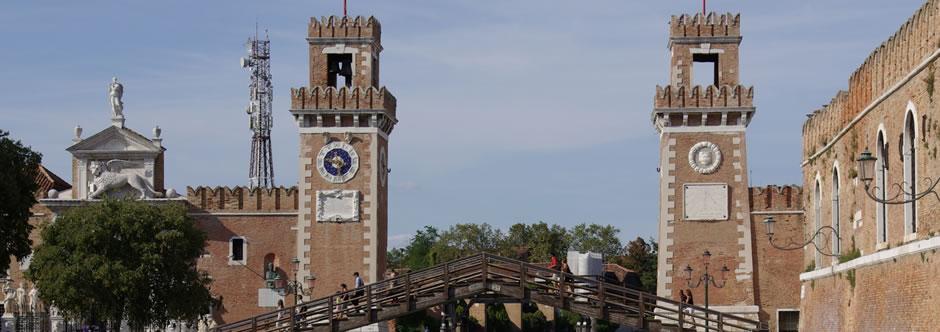
Visit Venice

This was once a vital complex of shipyards and armories which served the city's powerful navy. The site was built during the Venetian Republic Era in about 1104 and remained operational until the end of the Republic in 1797. The large complex covered 110 acres and was surrounded by walls to deter inquisitive eyes. The complex was divided into different areas each producing a different part of the ships. Every aspect of the shipping industry was covered from the forest in Veneto which supplied the Arsenal with wood to the rigging, ropes, sails, munitions and other maritime implements. The frame-first method of shipbuilding was developed here and at its peak the 16,000 shipyard employees could produce a ship a day. The shipyard was the largest preindustrial production center in the world and a symbol of venetian power. Munitions and weapons were also developed here. Although the shipyard began as a naval ship building site it started to produce merchant vessels as well following the arsenal's expansion in 1320 into Arsenale Nuovo. The Arsenale designers created the galleon, an armed sailing ship which made up the Serenissima fleet and also developed the assembly line model of mass production.
The shipyard has a Classical revival gate, Porta Magna (1460) which may have been created by Antonio Gambello based on a design by Bellini. Nearby are two statues of lions which were brought to Venice from Greece. The Arsenal declined in importance and today the site is used as a naval base, a research center, a center for the preservation of historic boats and as an exhibition space during the Biennale di Venezia.

